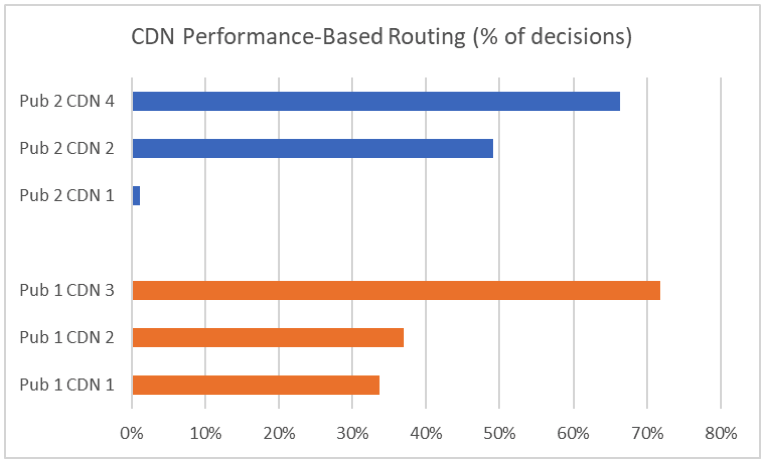Multi-CDN Optimization: The Importance of Measuring Each and Every Stream
One way a CDN competes for your video delivery business is by showing you data that proves that it is faster than other CDNs. Every CDN has a handful of industry reports, third-party tests, and/or head-to-head customer bake-offs that prove that at least sometimes, under some conditions, they are fastest.
But none of that data answers the questions that really count: how well does each CDN perform for you, delivering video to your end users? And how can you combine two or three CDNs to get the best video experience for every user?
Any CDN’s overall performance is an average of how that CDN performs on millions of deliveries; across many regions; to dozens of different devices; connected to hundreds of access networks; at different times of the day and days of the week; and averaged over hundreds or thousands of customers – all under constantly changing conditions. Reducing all of those variables to a single, average statistic ignores all the complexity and volatility inherent in the real-world conditions under which end users watch video.
For example, each customer has its own line-up of CDNs, and is mapped to a particular subset of each CDN’s resources; each customer’s users are distributed differently – geographically, across access networks, and across devices; and the demand profile against each customer’s content catalog varies and is unique.
The most effective way to manage an environment this complex – and ensure the best possible results – is to measure the performance of each CDN as it delivers each and every video stream, and then use those specific, detailed measurements of your audience’s actual video experiences to assign CDNs stream-by-stream, in real time.
And the actual numbers prove it.
We looked at two customers – let’s call them Publisher 1 and Publisher 2 – each of which uses three CDNs (two of which are the same). Over a 30-day period DLVR, a Comcast Technology Solutions partner for the Comcast CDN, made over 500 million CDN decisions for these two publishers. Both publishers rely on DLVR to make CDN performance the priority, but each has very different business rules for CDN decisioning.
A comparison of the decisions DLVR made for these two customers reveals a few key data points:
- CDN performance varies significantly from one publisher to the next. These two customers showed very different levels of hazard conditions, even among the same CDNs.
- It’s important to measure every stream to optimize video delivery for performance in a multi-CDN workflow. CDN performance varies from moment to moment, delivery to delivery, and from customer to customer.
- Predictive, performance-based multi-CDN switching is the only path to getting the most impact out of a multi-CDN workflow.

DLVR data demonstrates the difference in CDN decisioning for each publisher. Publisher 2’s business rules are set up to switch to CDN 1 as a last resort to maintain performance, whereas Publisher 1 relies on CDN 1 more often.
There’s clear value in having multiple CDNs. But a metric that averages publisher results into a blended measurement tells you very little about your specific CDN performance that is useful or actionable. Measuring every stream as it plays, and then acting on those measurements stream-by-stream to select the best CDN for each user delivers the best possible experiences across your audience.
Check out more information on how Comcast CDN and DLVR work together to provide robust multi-CDN strategies.